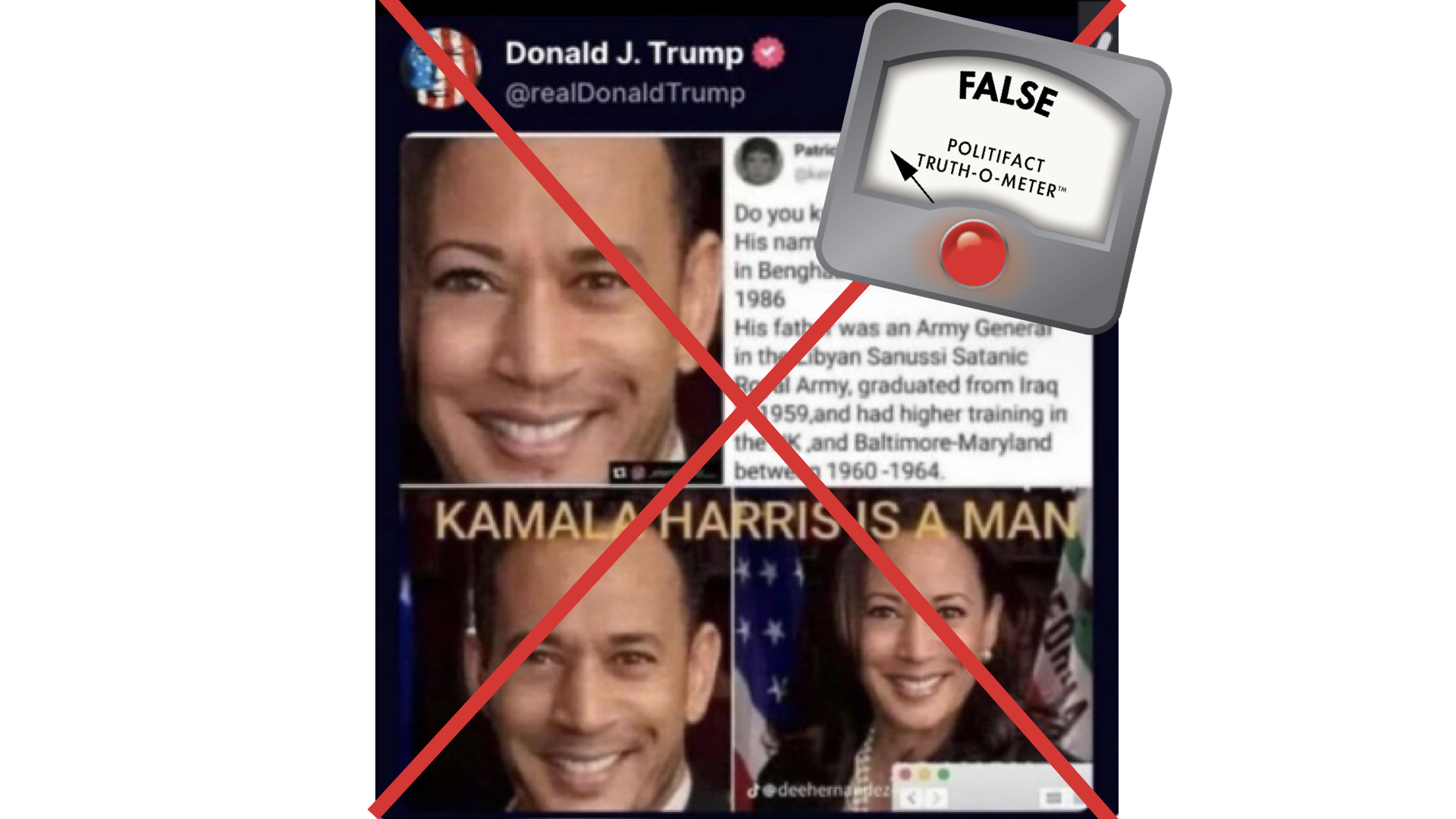
Este artículo estará disponible en español en El Tiempo Latino.
The Internal Revenue Service did not implement a new voluntary program that certain employers could have used to report tips earned by their workers. But the proposal is partly the basis for a Trump campaign TV ad that falsely claims Vice President Kamala Harris “weaponized” and “literally unleashed” the IRS on tipped workers.

The Service Industry Tip Compliance Agreement, or SITCA, program was proposed in February 2023 and offered for public comment until May 2023. If finalized, it would have replaced three existing IRS tip reporting programs that allow certain service industry employers to calculate the federal income and payroll taxes that already must be paid on tip-based earnings.
The IRS said the proposed program was aimed at increasing tax compliance, potentially reducing the need for more audits, but the proposal has been put aside.
“Treasury and the IRS have no plans to move forward with the voluntary program and, as such, there are no new reporting or compliance components,” Treasury Department spokeswoman Ashley Schapitl said in a statement emailed to FactCheck.org.
However, a campaign ad from former President Donald Trump mischaracterizes the proposal and falsely suggests that the program is active and targeting tipped workers.
The 30-second ad, titled “Here’s a Tip,” began airing in Nevada on Aug. 22, according to AdImpact, a service that tracks political advertising. The ad starts by warning viewers not to be fooled by what the vice president has said.
“Harris not only supports taxing service workers’ tips, news reports confirm [President Joe] Biden and Harris have weaponized the IRS to confiscate your tip money,” the ad’s narrator says. “Harris and Biden have literally unleashed the IRS to harass workers who receive tips and they just may be coming to your house next.”
The narrator then says: “Only President Trump has a plan that ends all taxes on service workers’ tips.”
Trump, the Republican presidential nominee, did propose eliminating federal taxes on tips in a June 9 rally in Nevada. But two months later, at her own Nevada rally on Aug. 10, Harris, the Democratic nominee for president, announced that she, too, would “eliminate taxes on tips for service and hospitality workers” as president.
Under current law, employees are required to pay income taxes on their income – including tips – and both employers and workers pay payroll taxes on that total income. Payroll taxes fund Social Security and Medicare.
Harris is reportedly considering eliminating federal income taxes, but not payroll taxes, on tips and limiting the exemption to those earning $75,000 a year or less. In an Aug. 23 rally in Nevada, Trump said, if he wins, “we are going to let you keep 100% of your tip income and not be harassed.” That suggests he would eliminate “all taxes” on tips, as the ad also says.
Moreover, the claim that the IRS has been “weaponized” against, or “unleashed” on, workers who rely on tips is false.
To support those claims, the ad cites two articles from conservative or libertarian publications and a commentary piece from a conservative taxpayer advocacy group. The subject of those reports was the SITCA program, which the IRS announced in early 2023 as a proposal – not a rule – to get public feedback. The agency had been working on an updated tip reporting system since 2013.
The IRS said in a press release that SITCA was designed “to serve as the sole tip reporting compliance program for employers in various service industries,” replacing three existing programs that employers can use to report their workers’ income from tips. The proposed program was intended to capitalize on improvements in point-of-sale and time and attendance systems to help service industry employers more accurately report tipping data to the government.
Meanwhile, employees would not have participated in SITCA at all, unlike the existing tip reporting programs, and thus would no longer be offered tip income audit protection – a point emphasized in an Aug. 13 commentary piece by the conservative Americans for Tax Reform, which was cited in the Trump campaign ad.
But that did not mean employees were necessarily more likely to be audited. The IRS said that compliance requirements for employers could incentivize participants to train and educate employees to ensure more accurate tip reporting, which would benefit workers if they happened to be the subject of an audit.
More importantly, as we said earlier, the program that was under consideration is not moving forward, according to a Treasury Department spokesperson. So, the proposal did not lead to changes in required tip reporting for employers or employees. The three older voluntary programs for employer tip reporting still exist.
Not 87,000 Agents
We asked the Trump campaign if there was other supporting evidence for the ad’s claim that the Biden-Harris administration “weaponized” or “unleashed” the IRS to go after tipped workers. In response, a spokesperson, Karoline Leavitt, pointed to the Inflation Reduction Act, which, she said, Harris “cast the tie-breaking vote for in the Senate and hired 87,000 new IRS Agents.”
Trump went further in the Aug. 23 Nevada rally, saying, “Kamala cast the tie-breaking vote to hire 87,000 new IRS agents to go after your tip income.”
Harris was the deciding vote in the Senate for the Democrat-led Inflation Reduction Act, which became law in August 2022. Among other things, the law included nearly $80 billion in IRS funding over a decade.
But the suggestion that the IRS would use that money to hire more than 80,000 agents, at least in part, to audit workers who rely on tips is false. (The ad even features actors portraying IRS agents raiding a woman’s home.)
As we’ve written numerous times, the IRS funding could be used to hire about 87,000 total employees over several years. But not all of them would be revenue agents who conduct audits. The Treasury Department previously told us that most hires would replace retiring or departing workers and most of the new positions would be in customer service.
Furthermore, those who are hired to handle audits would prioritize reviewing large corporations, complex partnerships and high-income individuals — not middle- and lower-income taxpayers — officials have said.
Editor’s note: FactCheck.org does not accept advertising. We rely on grants and individual donations from people like you. Please consider a donation. Credit card donations may be made through our “Donate” page. If you prefer to give by check, send to: FactCheck.org, Annenberg Public Policy Center, 202 S. 36th St., Philadelphia, PA 19104.


